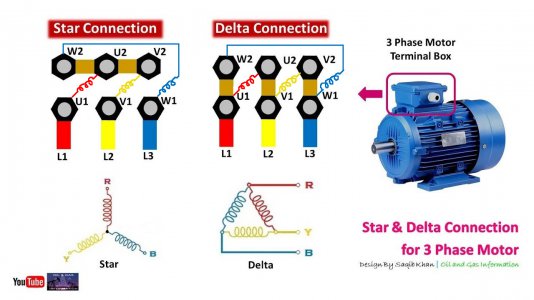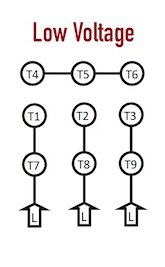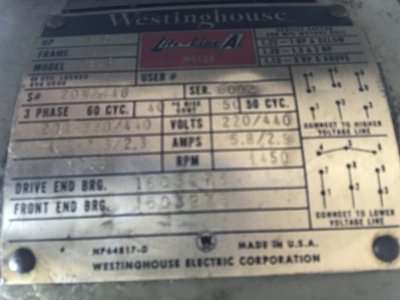You only have to Google "Three Phase Motor Connections", and switch to "images" to get a bewildering array of star (WYE) and delta connections, including transformers using both in the same device. While the star and delta connections are easy to understand when drawn out as circuit diagrams spread out in a triangle, the way we see it gets connected is when the ends of the motor windings (shown as coils) are re-arranged so that short metal connection links can be placed between them in various configurations.
The thing to get straight in the mind is "where are the windings between the connection points" we can see ?
Decode where the coils are between the "T" designations.
Next is to know that the connection that uses the LOWER voltages is the DELTA.
The connection that uses the HIGHER voltages is the STAR kind, also called WYE.
Nominally, the difference factor between them is √3 = 1.732, but the range of voltages that can actually be applied is wide, and much messed about with. If a WYE connected motor is changed to DELTA, then it can run on a lower voltage and still deliver the same power. Lower voltage, yes, but it takes higher currents, and the product voltage x current remains the same.
I think the coils in your motor are between..
[T4] and [T7],
[T5] and [T8],
[T6] and [T9].
BUT - I might have that wrong!
The way your diagram is presented is confusing to me.
The WYE windings part on the right would work if links were shown added to join T7-T8-T9 all together, but they are not shown.
Do the lines represent links?
Take great care with the way we express the terms here! A motor connected for LOW voltage is NOT going to run slow if it sees a voltage intended for a WYE connection!!
A "motor connected for LOW voltage" means that we EXPECT a low voltage to be applied. If you put a high voltage on it, you are asking for 1.732 x the rated power! Some folk do this deliberately if their 3-phase supply is low, like about 280V line-to-line, or even if they just want to abuse the motor, and wring more power out of it!
What actual phase-to-phase voltage is coming out of your 3-phase converter supply?
The ways these motors can "seem anemic" or run slow include messed up links, open circuit windings, binding up bearings, metal chip debris and magnetic dust clogging the space between the rotor and the poles, and much more. That said, they are made of fundamental stuff. Iron, copper wires, and insulation. There is not much that can go wrong with them unless they burn up, or the insulation fails.
Any internal dings damage that allow winding wires to connect in ways unintended can represent "shorted turns". They get hot, and the motor limps along.
Test the continuity between the windings. You will discover which terminals only go to a single one other. Use a multimeter. You might have one already. At a pinch, a couple of flashlight batteries, a small bulb, and some hookup wire to make up a crude continuity tester, or use a spare wall-wart charger from an old phone.
There are folk here who have 3-phase and motor stuff saturated through them, and probably built into their DNA. If you get in a knot with this, I am sure they will help.
For now, check all the individual windings are OK, and all read the same value. It will be a low reading of only a few ohms, and there should be no fault unwanted continuity or leaks between them. In the diagram, I have added in the windings, shown as red, yellow, and blue coils. Sorry - the hand wobbled a bit.






